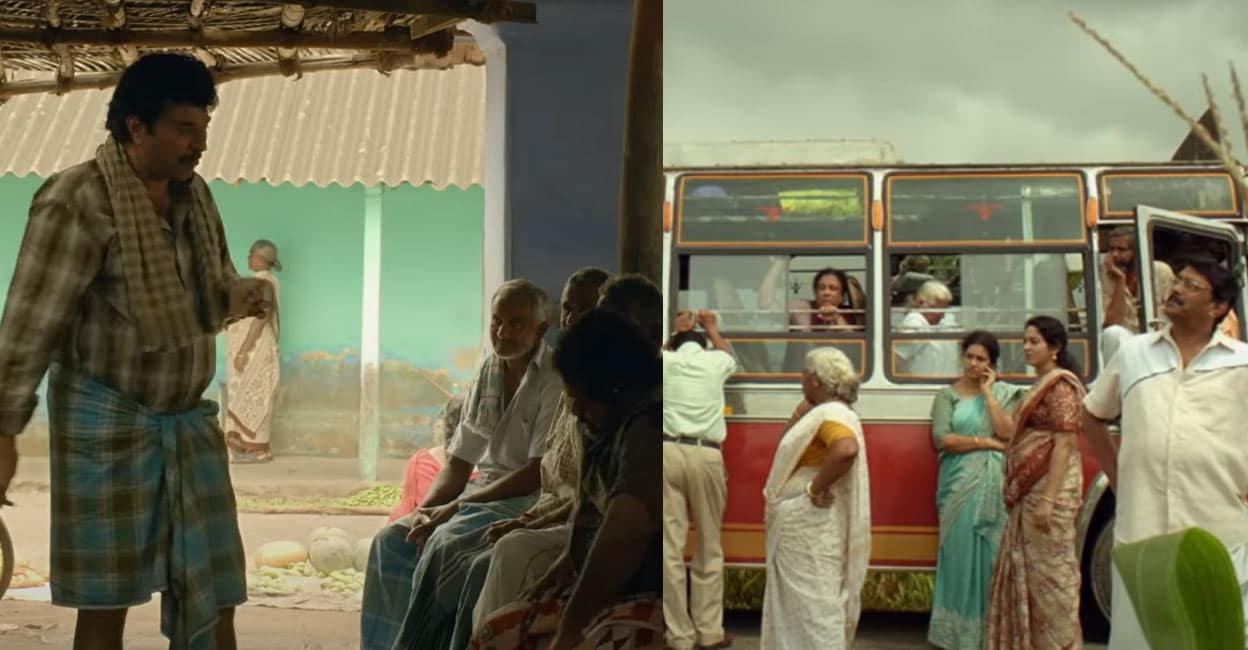Lijo’s ‘Nanpakal’ review: Post-siesta drama a lofty cinematic experience

Mail This Article
Like falling asleep, is Death;
Like waking up from sleep, is Birth – Thirukkural
'Nanpakal Nerathu Mayakkam', or siesta, is a judicious mix of myth and reality, cinema and drama. NNM could also be positioned along the blurring lines, if any, that differentiate between hallucination and trance.
Lijo Jose Pellissery revels in immersing himself in the fine art of cinema. If he gets a high from it, so be it. No one is complaining.
Lijo’s storyline is etched in a mundane pilgrimage journey to the Holy Shrine of Velankanni by a group led by the protagonist James (Mammootty), his kith and kin.
Pellissery’s protagonist is the archetypal fussy character you so often stumble upon in Kerala’s high ranges. He is not averse to showing his likes and dislikes which we could tag as silly. James’ aversions probably are more dominant than likes as the group embarks on the return journey – It seems as though the pilgrimage itself is born out of compulsion.

The siesta changes it all. Lijo metamorphoses his lead to a different terrain post-siesta in a random interplay of myth and reality.
The characters accompanying him, including his wife and son, retain their identities and see in him a different persona – A villager with striking similarities to Sundaram.
Now, Sundaram is a missing character, but Lijo seamlessly weaves the fussy high ranger into a picture postcard locale somewhere in the Tamil hinterland.
And into Sundaram’s circle of kith and kin, who are yet to figure out his mysterious disappearance. James begins to live, or enact Sundaram’s life and breathe his mannerisms as all others in the drama remain stunned onlookers.
They struggle to separate the myths. Pellissery’s mastery is his innate ability to traverse different tracks for the filmy craft he so dearly holds. The backdrops his reels traverse too vary as a rule.
Lijo seems to have placed Theni Eswar, who wields the camera, in different spots in the picture postcard village that our protagonist strays into.
Eswar and his camera then get dug up there. But nowhere have we seen static shots capture the poignant mood like NNM, as the new Sundaram avatar crisscrosses his long-forgotten alleys and fields, perhaps hoping to stumble upon his long-lost affections.
No one seems to buy his eccentricities though -- Like the milk he offers to sell to villagers. For they are provided milk by a faceless man and not Sundaram, who is also stunned to figure out a temple is being constructed in what he thought was an abandoned stretch of land till yesterday.
Sundaram is lost, and so are his former and present near and dear ones, as the audience treads the trance. NNM’s frames curated by Eswar form the perfect static background for capturing a captivating drama.
Lijo isn’t inhibited to shun his camera’s slalom we saw in ‘Jallikattu’ or ‘Churuli’. For NNM is in a different plain altogether – it doesn’t ooze the eerie rusticism of Churuli or the flamboyant symbolism of ‘Jallikattu’.
Like the apt, static camera angles which haunt us, NNM is somewhat bland in action but rich in nuances. The orchestrated chaos we see in ‘Jallikattu’ or ‘Churuli’ is missing. But through the interplay of hallucination and trance Lijo’s scriptwriter S Hareesh infuses into Mammotty’s character, the master craftsman pulls the actor and the audience to a lofty plain of cinematic excellence. We cannot but embrace this irrational reel exuberance.


